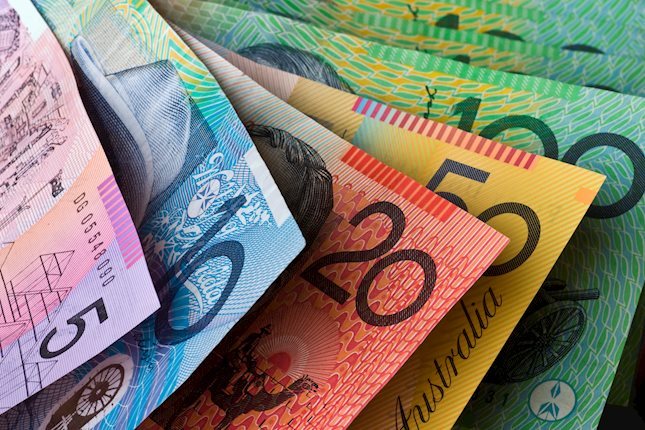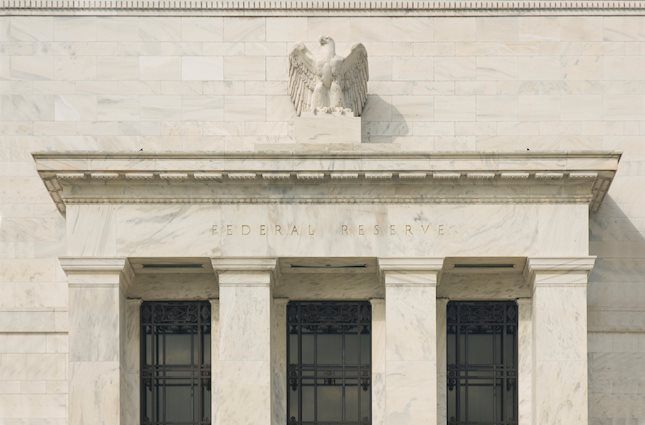Overview: The dollar is bid to start the new week. It has taken out last week's high against the Swiss franc, and the euro has been sold through last week's lows. The divided opposition allowed Ishiba to continue as Japan's prime minister, heading up a minority government. The German government collapsed last week. Chancellor Scholz wanted to hold off holding (and losing) a vote of confidence until January, setting the stage for elections, but it seems increasingly likely sooner. Meanwhile, the widening two year-interest rate premium means one is paid more to be long dollars by the most in nearly two years. Among the G10 currencies, the Australian and New Zealand dollars posting minor upticks against the dollar. The rest are heavier. The Turkish lira is firm while the other emerging market currencies are weaker, led by the Thai baht (~-1.0%) and the Mexican peso (~-0.70%).
Equities were mixed in Asia Pacific. The MSCI Asia Pacific Index rose 2.4% last week to snap a five-week drop. Mainland shares that trade in Hong Kong were off 1.4% and South Korea's Kospi fell more than 1%. Mainland China and Indian equities advanced. Europe's Stoxx 600 is up 1.2% but has a three-week slide in tow. US equities trade today, but the bond market is closed for Veteran's Day. The index futures are trading firmly. European benchmark 10-year yields are mostly 2-3 bp lower. The 10-year Gilt yield is practically flat near 4.43%. That is about 22 bp higher than a month ago. At 4.30%, the 10-year Treasury yield is up 20 bp over the past month. Gold peaked in late October near $2790. It fell to $2643.50 last Thursday and is consolidating today with a softer profile. It is below $2670 in late European morning turnover. December WTI has trading below last week low (~$69.75). A break of $69 could re-target $68.20 and then the late October low near $66.70.
Asia Pacific
Japan's lower chamber of the Diet met earlier today and due to the opposition's inability to come together, Ishiba-san remains prime minister, even though the LDP and its coalition partner lost their majority in last month's national election. In effect, Japan will be governed by a minority government for the first time. It may limit what it can do. Tax increases to pay for defense spending, it may not be able to secure a majority. The supplemental budget that is expected in the coming weeks might be slightly larger than it otherwise would have been. The yen's weakness appears to be one of the factors encouraging the market participants to be a bit more aggressive on the outlook for BOJ policy. The swaps market has 11 bp of tightening for the December meeting discounted and nearly 20 bp by the end of January. That is up from around 8 bp and 18 bp a week ago. China reported October CPI and PPI over the weekend. CPI eased to 0.3% from 0.4%, with food prices the key drag, while the deflation in producer prices deflation deepened (-2.9% vs. -2.8%). China's monetary policy should be expected to impact with a lag. Therefore, it may be too early to see the effect of what appears to be significant easing of monetary policy. It also may be too early to see the impact on real economy. Still, the national holiday help to lift some of October's high frequency data China reports at the end of the week.
The dollar finished last week near JPY152.65 and that is today's low. The greenback recovered to JPY153.85 in early European turnover. Last Wednesday and Thursday, it tested the JPY154.70 area, and $1 bln options at JPY155 expire tomorrow. Intraday support is seen near JPY153.30. The Australian dollar is consolidating in about a quarter-cent range today above $0.6575. Nearby resistance is seen around $0.6600. The pre-weekend low was slightly below $0.6560. Last week's high was closer to $0.6690. The greenback is pushing above last week's highs (~CNH7.2130). The next target is near CNH7.25, last seen in early August. The PNOC set the dollar's reference rate nearly 0.5% higher than the pre-weekend fix at CNY7.1786 (CNY7.1433 pre-weekend).
Europe
Eurozone politics are overshadowing the light economic agenda this week. The two pillars of Europe are said to be Germany and France, and the governments of both are in disarray. Given the potential trade and geopolitical challenges on the horizon, the weakness of Berlin and Paris puts Europe in a vulnerable position. In the UK, the Labour government is off to a shaky start. The GBP70 bln in new spending (about half of which will be funded through new borrowing), spurred a 40 bp rise in the 10-year Gilt yield, and a warning from the Bank of England that it could boost inflation by 0.5% over the next year. The swaps market sees slightly less than a one-in-four chance of the follow-up cut in December and has two cuts fully discounted by the end of H1 25.
The euro has been sold through last week's low (~$1.0685) to almost $1.0660 in European turnover today. The $1.0700-20 area now offers initial resistance. The low for the year was set in mid-April near $1.06. Given the interest rate differential, one is paid more to be long US dollars (depending on the tenor). The lower Bollinger Band is near $1.07 today. Sterling held up better than the euro but still, was turned back from $1.30 and straddled the $1.29 area ahead of the weekend. Last week's low, set Wednesday was about $1.2835, looks to be retested, though it probably takes a break of $1.28 to signal the next leg down. Sterling continues to trade within last Wednesday's range (~$1.2835-$1.3050).
America
Firm US interest rates and a strong US dollar may be supported by the anticipation of an uptick in October headline CPI, this week's highlight, on Wednesday. The bond market and banks are closed today in the US, though the stock market is open. It is also a federal holiday in Canada. And even then, it is a light week for Canada's economic diary. Not so for Mexico. Today, its September industrial output on tap. It likely rebounded after falling by 0.5% in August. The highlight of the week is the Banxico meeting on November 14. On balance, quarter-point rate cut is the most likely scenario.
The US dollar fell (<0.25%) for the first time since the end of Q3 against the Canadian dollar last week. Last Wednesday's range is key: ~CAD1.3820-CAD1.3960. We suspect the break is to the upside, helped, as it were, by the continued widening of the US two-year premium over Canada. There seems little in the way of a test on CAD1.40, where $600 mln options expire Thursday. The US dollar fell against the Mexican peso last week, snapping a three-week advance. It has come back bid and is near MXN20.35 in European turnover. The dollar looks poised to re-test last week's spike hike near MXN20.8070.
Opinions expressed are solely of the author’s, based on current market conditions, and are subject to change without notice. These opinions are not intended to predict or guarantee the future performance of any currencies or markets. This material is for informational purposes only and should not be construed as research or as investment, legal or tax advice, nor should it be considered information sufficient upon which to base an investment decision. Further, this communication should not be deemed as a recommendation to invest or not to invest in any country or to undertake any specific position or transaction in any currency. There are risks associated with foreign currency investing, including but not limited to the use of leverage, which may accelerate the velocity of potential losses. Foreign currencies are subject to rapid price fluctuations due to adverse political, social and economic developments. These risks are greater for currencies in emerging markets than for those in more developed countries. Foreign currency transactions may not be suitable for all investors, depending on their financial sophistication and investment objectives. You should seek the services of an appropriate professional in connection with such matters. The information contained herein has been obtained from sources believed to be reliable, but is not necessarily complete in its accuracy and cannot be guaranteed.
Recommended Content
Editors’ Picks

AUD/USD: Next on the downside comes 0.6500
Further gains in the US Dollar kept the price action in commodities and the risk complex depressed on Tuesday, motivating AUD/USD to come close to the rea of the November low near 0.6500.

EUR/USD pierces 1.06, finds lowest bids in a year
EUR/USD trimmed further into low the side on Tuesday, shedding another third of a percent. Fiber briefly tested below 1.0600 during the day’s market session, and the pair is poised for further losses after a rapid seven-week decline from multi-month highs set just above 1.1200 in September.

Gold struggles to retain the $2,600 mark
Following the early breakdown of the key $2,600 mark, prices of Gold now manages to regain some composure and reclaim the $2,600 level and beyond amidst the persistent move higher in the US Dollar and the rebound in US yields.

Ripple could rally 50% following renewed investor interest
Ripple's XRP rallied nearly 20% on Tuesday, defying the correction seen in Bitcoin and Ethereum as investors seem to be flocking toward the remittance-based token. XRP could rally nearly 50% if it sustains a firm close above the neckline resistance of an inverted head and shoulders pattern.

Five fundamentals: Fallout from the US election, inflation, and a timely speech from Powell stand out Premium
What a week – the US election lived up to their hype, at least when it comes to market volatility. There is no time to rest, with politics, geopolitics, and economic data promising more volatility ahead.

Best Forex Brokers with Low Spreads
VERIFIED Low spreads are crucial for reducing trading costs. Explore top Forex brokers offering competitive spreads and high leverage. Compare options for EUR/USD, GBP/USD, USD/JPY, and Gold.